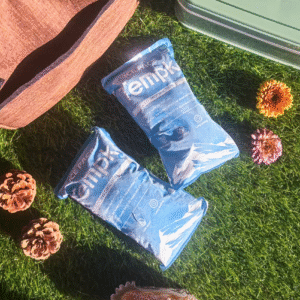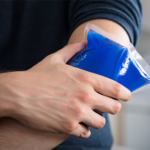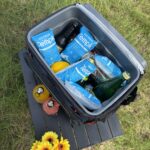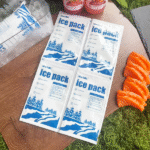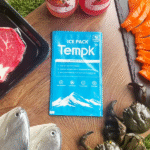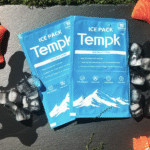Bester Trockeneis-Eisbeutel: Wie Sie wählen 2025
Aktualisiert: Oktober 13, 2025
Finden der bester Trockeneis-Eisbeutel beginnt mit der Sicherheit und endet mit der Vorhersehbarkeit. In den ersten Karton packen Sie, sicherstellen Entlüftung, richtig UN1845 Kennzeichnung für Luft, und eine Passform, die die Waren ohne Brüche oder Nacharbeiten gefroren hält. Sie werden Verluste verringern, Abnahmeprüfungen bestehen, und mit Zuversicht versenden, Spur für Spur.
-
Wie funktioniert die bester Trockeneis-Eisbeutel Verhindern Sie Bursts und bestehen Sie Kontrollen?
-
Wie viel Trockeneis oder Gel benötigen Sie? 24–72 Stunden?
-
Welche Materialien, Dicken, und Lüftungswege funktionieren am besten auf echten Fahrspuren?
-
Wann ist Gel/PCM die bessere Wahl als Trockeneis für gekühlte Ziele??
-
Was 2025 Innovationen sind wichtig: Intelligente Lüftungsschlitze, Monomaterialien, und digitale Validierung?
Was macht das bester Trockeneis-Eisbeutel sicherer und konform?
Kurze Antwort: Entlüftung, fit, und Haltbarkeit. Der bester Trockeneis-Eisbeutel beinhaltet immer einen kontrollierten Entlüftungspfad, Verwendet einen Beutel, der in den Block oder die Pellets passt, ohne zu stark zu verschließen, und übersteht Stürze und Vibrationen in der Automatisierung. Verpackungen dürfen nicht luftdicht sein, und Innentaschen sind gefaltet, nicht versiegelt– ein Pass/Fail-Detail auf Abnahme-Checklisten.
Warum das für Sie wichtig ist: Trockeneis sublimiert und erzeugt Gas. Ein versiegelter Beutel speichert den Druck und kann platzen, den Versender beschädigen, oder die Annahme scheitert. Die sicherste Standardpackung verwendet Belüftungsfreundliche Innentaschen und a belüfteter Außenverteiler, markiert UN1845 mit Nettogewicht für Luft. Diese eine Änderung reduziert Nacharbeiten und Reklamationen bei eingefrorenen Bahnen erheblich.
Materialauswahl für die bester Trockeneis-Eisbeutel
| Material | Barriere | Entlüftungsverhalten | Haltbarkeit | Was es für Sie bedeutet |
|---|---|---|---|---|
| HDPE 5–6 Mio | Medium | Ausgewogen | Hoch | Robust in der Automatisierung, guter Allrounder. |
| LDPE 4–5 Mio | Mitteltief | Gut | Flexibel | Einfachere Handhabung; Braucht noch Faltlüftung. |
| Metallisiert/Mylar | Hoch | Niedrig ohne Lüftungsschlitze | Sehr hoch | Nur mit Mikrolüftungen oder Falzspalten verwenden. |
| Kraft + PE-Laminate | Medium | Natürlich belüftet | Mäßig | Umweltfreundliche Wahl; Ideal für Pellets/Blöcke. |
Praktische Tipps, die Sie heute bewerben können
-
Falten, nicht versiegeln Jeder Innenbeutel mit Trockeneis.
-
Halten Sie Abstand Headspace-Kanal von den Innenbeuteln bis zur Entlüftung/dem Stopfen des Versenders.
-
Lufttransporte kennzeichnen „Kohlendioxid, solide (UN1845)” mit Netz kg.
-
Trainieren Sie Teams mit der Phrase „Paket ist entlüftet.“
Fall der realen Welt: Eine nationale Lebensmittelmarke ist von versiegelten Folienhüllen auf umgestiegen gefaltete HDPE-Beutel plus einen belüfteten Kühler. Sie reduzieren Brüche und Nacharbeiten und verbessern gleichzeitig die pünktliche Lieferung auf Sommerrouten im zweistelligen Bereich.
Wie viel davon bester Trockeneis-Eisbeutel brauchst du??
Kurze Antwort: Beginnen Sie mit einem Spurbasierte Faustregel und dann validieren. Für gefrorene Fahrspuren, grob planen 5–10 lb per 24 Stunden pro Versender, Abhängig von Isolierung und Umgebung. Für gekühlt (0–8 ° C), Verwenden Sie Gel/PCM in der Größe nach Stunden und Wärmebelastung; Sie benötigen UN1845 nicht für reine Gel-Versender.
Expandieren: Blockiert aufgrund der geringeren Oberfläche länger als Pellets, Wählen Sie also Blöcke für lange Laderäume und Pellets für schnelles Herunterziehen und Auffüllen. Teilen Sie immer die Gesamtmasse auf sechs Positionen (unten/seitlich/oben) um die Temperaturen zu stabilisieren und die Entlüftungswege zu erhalten. Protokollieren und stimmen Sie die Saison ab.
Größenregeln für 24–72 Stunden (Beginnen Sie hier)
| Ziel | Typisches Packout | Masse planen | Was muss angepasst werden? |
|---|---|---|---|
| 24 h gefroren | 2 unten, 2 Seiten, 2 Spitze | Insgesamt ca. 5–10 Pfund | Schaumstoffkappe hinzufügen; Entlüftungsweg sicherstellen. |
| 48 h gefroren | Sechspunkt mit Blöcken | ~10–20 Pfund | Bevorzugen Sie Blöcke gegenüber Pellets. |
| 72 h gefroren | Sechs Punkte + Liner | ~20–30 Pfund | Vor der Masse die Isolierung aufrüsten. |
| 24–48 h gekühlt | 6 Gelziegel (600–900 g) | 4–6 Einheiten | Steigen Sie für Wärme auf PCMs mit höherer Latenz um. |
Praktischer Schätzer (optionale Einbettung)
Bester Trockeneis-Eisbeutel vs. Gelpack – wann sollten Sie sich für beide entscheiden??
Direkte Antwort: Verwenden Sie das bester Trockeneis-Eisbeutel (Echtes Trockeneis in belüfteter Verpackung) für gefroren Ziele. Verwenden Gel-/PCM-Packungen für 0–8 ° C. Viele Online-Angebote für „Trockeneis-Eisbeutel“ beziehen sich auf Gel/PCM und sind nicht wie CO₂ reguliert. Wählen Sie aus Temperatur zuerst, dann Passform und Compliance.
Kontext: Für Trockeneis sind belüftete Beutel und eine belüftete Außenverpackung erforderlich UN1845 Noten für Luft. Gel/PCM erfordert nichts davon, aber es kann keine Waren gefroren halten. Vermeiden Sie das Mischen, es sei denn, Sie wechseln zur Trockeneis-SOP.
Vergleich auf einen Blick
| Ziel | „Beste“ Wahl | Warum | Achtung | Für dich |
|---|---|---|---|---|
| Bewahren Sie die Ware tiefgekühlt auf | Bester Trockeneis-Eisbeutel (innen belüftet + entlüfteter Versender) | Stärkster gefrorener Halt | Verschließen Sie niemals Plastiktüten; Lassen Sie die Lüftungsschlitze offen | Weniger Ausfälle auf langen Strecken. |
| Lagern Sie die Ware bei 0–8 °C | Gel-/PCM-Steine | Einfaches Training; nicht UN1845 | Hält nicht gefroren | Geringere Betriebsbelastung; schnelleres Packen. |
Bester Trockeneis-Eisbeutel Verpackungen, die Schecks bestehen (24–72 h)
Kurze Antwort: Das nachsichtigste Muster ist das Sechs-Punkte-Packout– zwei unten, zwei seiten, zwei oben – plus ein freier Kopfraumkanal zur Entlüftung oder zum Abfluss des Schiffs. Innentaschen sind gefaltet, nicht versiegelt. Etikett UN1845 mit Netto-kg für Lufttransporte.
Wie man es baut
-
Wiegen & Teilt das gesamte CO₂ (Faustregel oben).
-
Richtig einpacken: Kraftsäcke oder gefaltete Folie; nicht Heißsiegeln.
-
Ort 2 unten, 2 Seiten, 2 oben rund um die Nutzlast (kein direkter Kontakt mit Vorwahlen).
-
Hinzufügen Schaumstoffkappe und warten Sie a Entlüftungskanal an den Stecker/die Entlüftung des Kühlers anschließen.
-
Überprüfen Etiketten und Annahmeartikel (Z.B., „Paket ist entlüftet“).
Haltbarkeitstests, die Ansprüche retten
| Prüfen | Ziel | Ihr Vorteil |
|---|---|---|
| Fallen (1.2 M) | Kein Bruch | Keine Kontamination, weniger Umpacken. |
| Druckanstieg | ≤0,2 bar | Bestätigt sichere CO₂-Entweichung. |
| 100+ Picks | Kein Reißen | Automatisierungsbereit. |
| Luftfeuchtigkeit/niedrige Temperatur | Kein Knacken | Hält −78 °C stand. |
2025 Trends für die bester Trockeneis-Eisbeutel
Was ist neu: Intelligente Lüftungsfolien, recycelbare Monomaterialien, CO2-verfolgte Chargen, Und KI-gestützte Sublimationsmodellierung Helfen Sie dabei, ohne zusätzlichen Arbeitsaufwand sicherer und umweltfreundlicher zu versenden. Diese Innovationen definieren in diesem Jahr neu, was „am besten“ bedeutet.
Letztes auf einen Blick
-
Intelligente Belüftungsöffnungen: Poren, die sich unter Druck öffnen, verringern das Berstrisiko auf Flugwegen.
-
Rucksäcke aus Monomaterial: Einfacheres Recycling und sauberere ESG-Berichterstattung.
-
Digitale CO₂-Rückverfolgung: QR-Batches speisen Scope-3-Audits ein.
Market insight: Verlader standardisieren sich belüftete Konfigurationen Und Sprache der Checkliste („Paket ist entlüftet“) um die Akzeptanz und Schulung zu beschleunigen – eine kleine Änderung in der Dokumentation, die zu enormen Compliance-Gewinn führt.
Häufig gestellte Fragen
Q1: Was ist das wichtigste Merkmal des besten Trockeneis-Eisbeutels??
A kontrollierter Entlüftungsweg– gefalteter Innenbeutel plus belüfteter Außenversand. Das ist der Kern von Sicherheit und Akzeptanz.
Q2: Kann ich einen Folienbeutel zur Aufbewahrung von Chips heißversiegeln??
NEIN. Nicht Trockeneis hineinlegen versiegelte Plastiktüten. Falten Sie den Mund oder verwenden Sie Kraftsäcke, damit CO₂ entweichen kann.
Q3: Gel-Packs im Vergleich zum besten Trockeneis-Eisbeutel – wie wähle ich aus??
Wählen Sie aus Zieltemperatur: Gel/PCM für 0–8 °C; Trockeneis zum Einfrieren. Bemessen Sie dann die Masse und wählen Sie die Materialien für Ihre Bahn aus.
Q4: Wie viel Trockeneis für 48 Std.?
Fangen Sie an 10–20 lb, bevorzuge Blöcke, Anschließend mit Datenloggern testen und je nach Jahreszeit anpassen.
Q5: Welche Etiketten sind für Luft erforderlich??
Markieren „Kohlendioxid, solide (UN1845)” mit dem Nettogewicht und stellen Sie sicher, dass Paket wird entlüftet.
Zusammenfassung & Empfehlungen
Rekapitulieren: Der bester Trockeneis-Eisbeutel ist a belüftete Konfiguration das die Waren gefroren hält, ohne CO₂ einzuschließen, Verwendet Materialien, die der Handhabung standhalten, und folgt UN1845 und der Akzeptanzsprache. Dosierung in der richtigen Größe mit Sechs-Punkt-Anordnung, dann validieren und dokumentieren.
Nächste Schritte:
-
Fahrspurzeit und Umgebungstemperatur kartieren; 2) Wählen Sie den Pakettyp (Trockeneis vs. Gel); 3) Entlüftung und Etiketten einstellen; 4) Pilot und Log; 5) SOPs standardisieren; 6) Überprüfen Sie ESG und Recyclingfähigkeit. Benötigen Sie eine einseitige SOP oder eine Spurgrößenbestimmung? Wenden Sie sich an unser Team.
Über Tempk
Wir entwerfen und validieren Kühlkettenverpackung für Leistung und Nachhaltigkeit. Unser Portfolio umfasst HDPE, metallisiert, Und Kraftlaminat Optionen mit technischen Belüftungsöffnungen, plus Gel/PCM-Lösungen für gekühlte Bahnen – alle validiert für die reale Logistik. Wir helfen 3PLs und Verladern, Abfall zu reduzieren, Brüche verhindern, und ESG-Ziele erfüllen. Sprechen Sie mit unseren Ingenieuren für eine spurspezifische Spezifikation.






